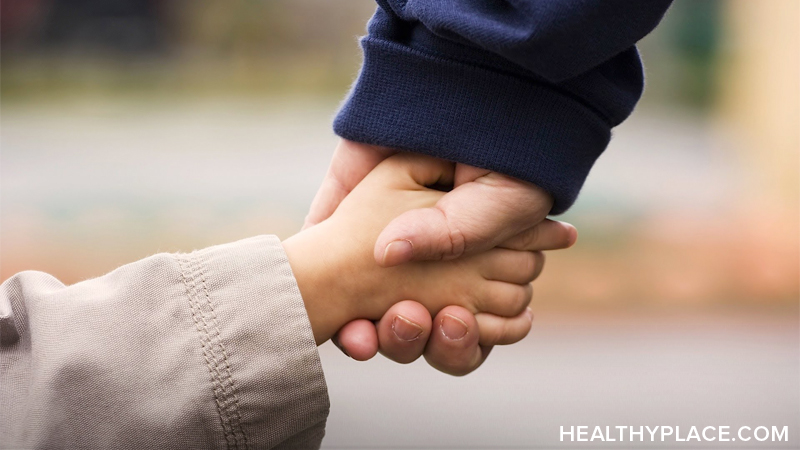Future of Sex
It's just mechanics; Viagra is just the start: we'll soon have pills that make you feel deep love and video games that give good vibrations. Welcome to the masturbatory society.
Is your sex life normal? The question was raised recently on the Oprah Winfrey Show. Tell us, the show asked its 20 million viewers, what turns you on, what turns you off, and what makes good sex.
The problem with such questions is that there are no "normal" answers. The normal is problematic because our ideas about sex have changed fundamentally. What constitutes normal is constantly refurbished. Its boundaries shift rapidly and continue to shift. So what was abnormal yesterday--say, pornography--becomes normal today. And what is shunned today (say pedophilia) may just as easily become normal tomorrow.
One huge jump was provided by Viagra. In less than six years since the impotence pill came on the market it has transformed sexual norms and practices. As Meika Loe argues in The Rise of Viagra (New York University Press), it has redefined the concept of normal and changed the language of sex.
From the beginning, this was a treatment branded and marketed as normal. Impotence was called "erectile dysfunction", or simply ED--a common condition, as the football legend Pele assured us in TV ads, but not normal. Moreover, it did not arise from psychological causes or physical damage; rather, it was a simple medical condition rectified by a pill. Suddenly, drug company surveys discovered that more than half the US adult male population suffered from ED; figures for Europe were not far behind.
So if you can't get it up because you're pissed, stressed out, simply not in the mood or no longer find your partner attractive, you are actually suffering from a disease. And like all diseases, it must be cured. The cure is to swallow a pill and have sex no matter what, anywhere, any time, whenever. This has now become the norm.
Viagra is another step in stripping sex of all its complexity. Sex has been reduced to a simple question: for men, "how big?"; for women, "how long?". Combine these conundrums with other features of a market economy, such as availability on demand, choice, flexibility to mix'n'match, and we have new definitions of sex and love and of what it means to be human.
Today, to be normal, humans have sex right up to their last breath. It's the way to go. Sex is no longer the indulgence of the young. Nowadays, it is people over 50 who are having the most sex. With demographic shifts, high divorce rates and early retirement, the erstwhile golden generation of Sixties swingers who let it all hang out are now the "silver singles" (as they are called in America). The preoccupations of their youth have been sustained through their later years by medical enhancements. The wet dreams of 60-year-olds, who turned on to chemical enhancement in the Sixties, are a manifest example of future normality for us all.
What Viagra actually treats is loss of male power. In a confusing, depersonalizing world busy reassigning status, regendering the social order, manipulating the ever-increasing demands of a commodified existence, sexual potency is the last bastion. Men, who have lost status and power almost everywhere, from workplace to home, must repair to the bedroom. Only there can they find the redemption of their true nature.
However, in an age of sexual equality, men cannot be left alone with their predicament. The other half of humanity, too, finds it is not exempt from malfunction. Just a few months ago, the disease "female sexual dysfunction" hit the headlines. But female sexuality being what it is, women probably need something more than a pill. Simple enhanced blood flow, as laboratory tests have shown, is not good enough. So a female Viagra won't do the job as well as a vibrator or a dildo--soon to be widely and cheaply available from a Boots near you. A vibrator outperforms even a man on Viagra.
More serious aids to female performance are in the pipeline. In the next few years, patches and drugs to enhance vaginal lubrication and sensitivity will become available. A US surgeon has already patented a pacemaker-sized device which, implanted under the skin, triggers an orgasm. Last month, clinical trials for the device were approved by the US Food and Drug Administration. Within a decade, it will be normal for every woman to have a perpetual orgasm whenever she wants it, wherever she needs it.
Love, too, will be available on demand. Recent research on love suggests that it consists of three basic biochemical elements. First, testosterone--which produces lust. Second, a group of amphetamine-like chemicals (dopamine, noradrenaline and phenylethylamine) produces feelings of euphoria that lead to infatuation. Third, if a relationship survives the first two rushes, a new biochemical response emerges, based on oxytocin, vasopressin and endorphins. This produces feelings of intimacy, trust and affection. Pharmaceutical companies are currently working on this third phase. So a "love pill" that modulates your subtler emotions and takes you straight to deep feelings of intimacy, trust and affection is just over the horizon. Science will fulfil the fairy tale. It will come up with a genuine love potion.
Where your sexual desires are normal and available on-demand
The sexual liberation of every woman and man approaches its apotheosis: availability on demand with peak performance assured gratification and enduring emotion. But much more has been let out of the bottle. The physical and psychological barriers to sex, identified as the ultimate metaphor for all the ills of humanity, had to be overcome. The consequence is that most sexual taboos have evaporated. No matter how dark your thoughts, how unethical your desires, how absurd your fetish, everything is normal. Your desire to dress up as a stuffed toy, your dreams of having sex with obese or dead people, your obsession with plastic or rubber, your fixation with asphyxiation--all that is sexually driven is OK.
Pornography's status as a taboo is rapidly disappearing. It has become part of the mainstream of western culture. Ancient Egyptians, Greeks and Romans had their erotica as esoterica on scrolls, pottery and frescos. Hindus have their erotic sculptures on temples. But in western culture pornography in unparalleled quantities and forms is communicated in every mass medium. Never before in history has there been so much pornography to be had by so many in such numerous ways.
Everyone is now just a click away from explicit, hard-core material. It is impossible to miss pornography on the internet because it seeks you out persistently, unannounced, at every opportunity. It is there on Channels 4 and 5, Sky and innumerable digital channels every night.
On MTV's reality show The Real World, you can witness bisexual group sex. Explicit sex, including shots of erect penises, can be viewed on Sky's revisionist western drama Deadwood. Michael Winterbottom's 9 Songs, which will go on general release shortly, offers a stream of close-ups of intercourse, fellatio, ejaculation and cunnilingus. The French art-house director Catherine Breillat has pioneered the transfer of porn stars into mainstream cinema. Her new film, Anatomy of Hell, is as graphic as it is bizarre. And if that doesn't satisfy you, you can go to a new breed of "pornaoke bars", just opened in Edinburgh, where you can groan and grind karaoke-style to porno tapes.
When pornography becomes normal, where will we go next?
There are only two taboos left: sex with children, and incest. Attempts to "normalize" pedophilia have begun. A thesis by Richard Yuill, awarded a PhD by Glasgow University in December 2004, suggests that sex between adults and minors is a good and positive thing. Yuill's research, based on interviews with pedophiles and their victims, "challenges the assumption" that pedophiles are inherently abusive. It is only a matter of time before other academics start arguing that incest, too, is decent and wholesome. Graphic art films and television documentaries will follow. The organizations campaigning for the rights of pedophiles will have their case for "normality" made for them.
They may then be able to take their place among the bewildering array of sexual orientations already being normalized. Once upon a time, there were heterosexuals and the love that dared not speak its name. Gay men and lesbians have long since lost their reticence. Then bisexuals, transsexuals and the "kinky" found their identity. Now we have intersexuals and the polyamorous. A few months ago, New Scientist announced the discovery, in breathless prose, of asexuals. These folk don't like to have sex--horror of horrors--with anybody. There are even orientations within orientations. So we have such self-definition as non-op transsexual, TG butch, femme queen, gender-queer, cross-dresser, third gender, drag king or queen and transboy. In one recent episode of Channel 5's CSI: crime scene investigation, a murder victim was said to be part of a community of "plushies", people who enjoy sex while dressed up as stuffed animals.
It is now normal to have your breasts removed or added to, have new genitals constructed, or sprinkle a dash of hormones for the appropriate, desired effect. Things are about to become even more complex. Within a decade or so, you will be able to modify your body almost totally, as you wish. You will be able to turn off all physical signs of gender, switch off the hormones and get rid of all secondary sexual characteristics. Then you can add on the bits you wish and "sculpt" your body in any shape you like. When gene therapy becomes common, things will be even easier. Already, there are people who are experimenting with this; and a "body-mod" subculture is thriving on the internet.
What you can't do in reality will soon be available in simulation. The emerging technology of haptics, or the telecommunication of sensation using a computer interface, will enable you to live your most horrific dreams in virtual reality. Haptic technologies simulate physical sensation of real objects and feed them to the user. The first generation of haptic technology can be experienced in certain video games for the Sony PlayStation where the joystick is used to simulate vibrations. The next generation, on its way from Rutgers University, will simulate pressure, texture and heat. Combine this with state-of-the-art graphics and some innovative software and you have a complete pornographic universe. As Eric Garland points out in the December 2004 issue of the American magazine The Futurist, among its first uses could be "pornography involving children and featuring violence". But what's the harm, as it is only a digitized child?
Am I the only person to wonder if the constant shifting of the boundaries of the normal, while increasing our obsession with sex, has really improved our sex lives? On the contrary, I would argue, it has led to a decline in real sex. Genuine intimacy cannot be generated through a pill. Neither can sincere, unconditional love be simulated. When sex is reduced to mechanics and endurance, there is little to differentiate it from plumbing and maintenance. When gender becomes meaningless, sex becomes empty. When sexual choice becomes an end in itself, then the end is destined to be tragic.
Sex used to be intercourse because it was part of a context, a loving relationship. When sex is just sex, without any context, what good does it do you? That is the crux of the problem. It becomes the ultimate narcissism, the sole gratification of self-love.
Welcome to the masturbatory society.
Ziauddin Sardar is editor of Futures, the monthly journal of policy, planning and futures studies
APA Reference
Staff, H.
(2021, December 21). Future of Sex, HealthyPlace. Retrieved
on 2025, April 29 from https://www.healthyplace.com/sex/articles/future-of-sex




